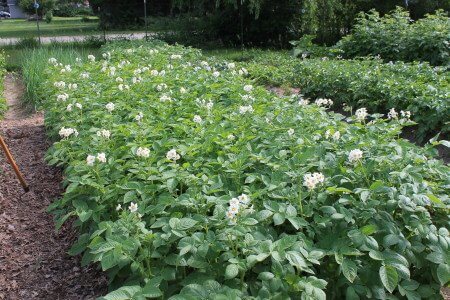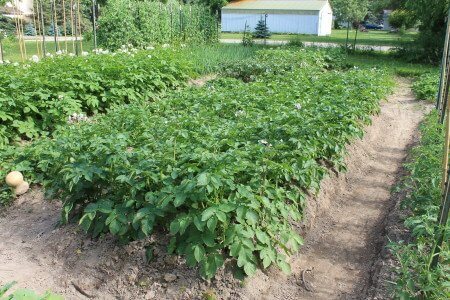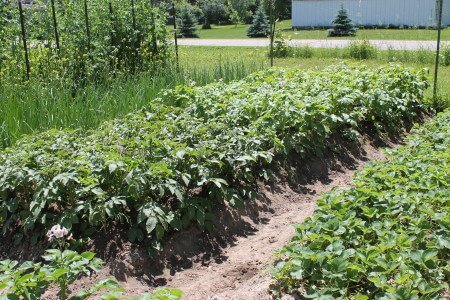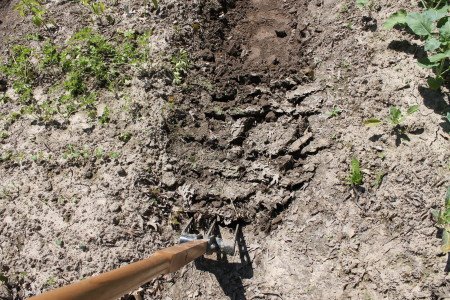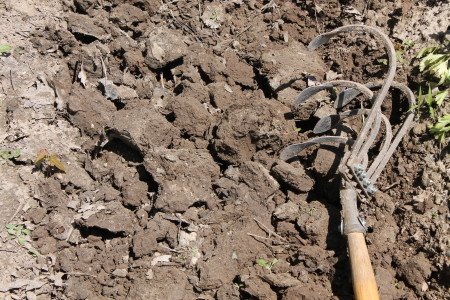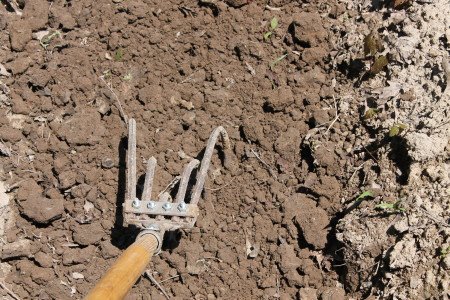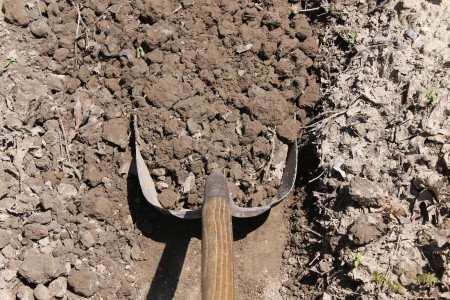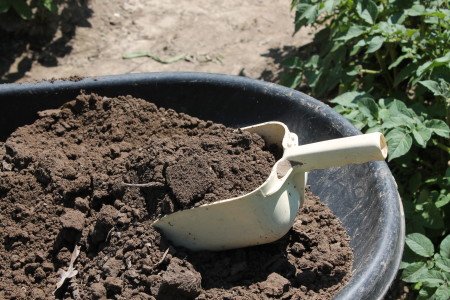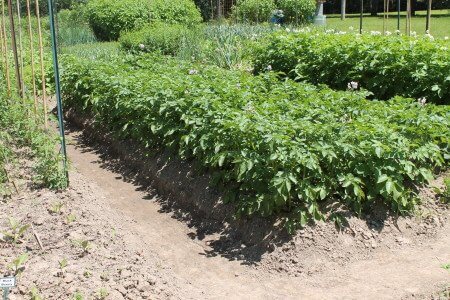Most years I grow 2 beds of potatoes. This year, as part of my way bigger than needed garden, I’m growing three beds. They’re planted more intensively than I’d like. That’s because I got carried away with my seed potato purchase from Wood Prairie Farm, an organic supplier from Maine. I’ve been meaning to buy from Wood Prairie for many years. Jim Gerritsen, the owner, is an associate of mine in the Direct Gardening Association and I’ve always wanted to trial his potatoes.
When I placed the order, I bought more than I should have. I was able to give some away, but I just didn’t want the seed to go to waste, so I planted more per bed, and three beds instead of two.
I have not checked underground yet, but the plants above are the most vigorous and healthy potatoes I’ve ever grown. If the tuber yields match the plants, I’ll be very happy.
My intensive planting left no soil for hilling around the plants, and I know that without some good hilling, I could not expect a good yield. I had no empty beds from which to steal some dirt, and my normal source of extra soil, the compost area, has been planted in squashes and melons.
The solution I used was to cut the paths around the beds deeper and use that dirt for hilling soil. At first I thought it would be an impossible task to break up the hard packed clay in the paths, but I figured out a way to do it without killing myself with hard labor.
As with many problems, the right tools make the solution easy. To initially break the clay I used a small fork made by Treadlite Broadforks. Normally, I like to use this as a weeding tool for deep rooted large roots like burdock. It proved perfect for this job, breaking the hard clay down about three inches.
To break up the clay clods, I used my old five tined cultivating hoe. This is a magical tool. Aside from its blades being the inspiration for our CobraHead tools, this tool rips hard soil and pulverizes clay clods.
It’s like a small powered roto-tiller, only better. It is essential for my approach to raised beds and I would be lost without it.
A scoop (grain) shovel works better than smaller shovels for shoveling up dirt from the paths and smoothing the path at the same time.
I didn’t have enough dirt from the paths directly adjacent to the beds, so I cut soil out of paths elsewhere in the garden. To move the soil I used a a single tire wheelbarrow. Two wheeled carts will not work in my narrow paths. I used a large grain scoop to dump the soil around the stems. It worked very well, allowing me to make a nice deep cone of soil around each plant.
So now I have well hilled plants. The harvest will tell if I got away with my intensive planting.


